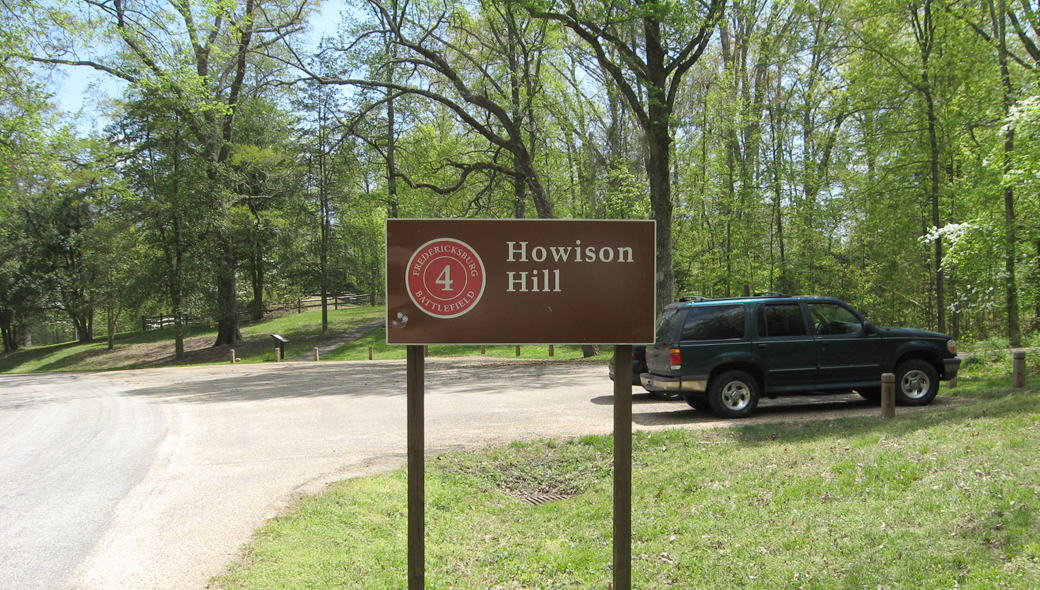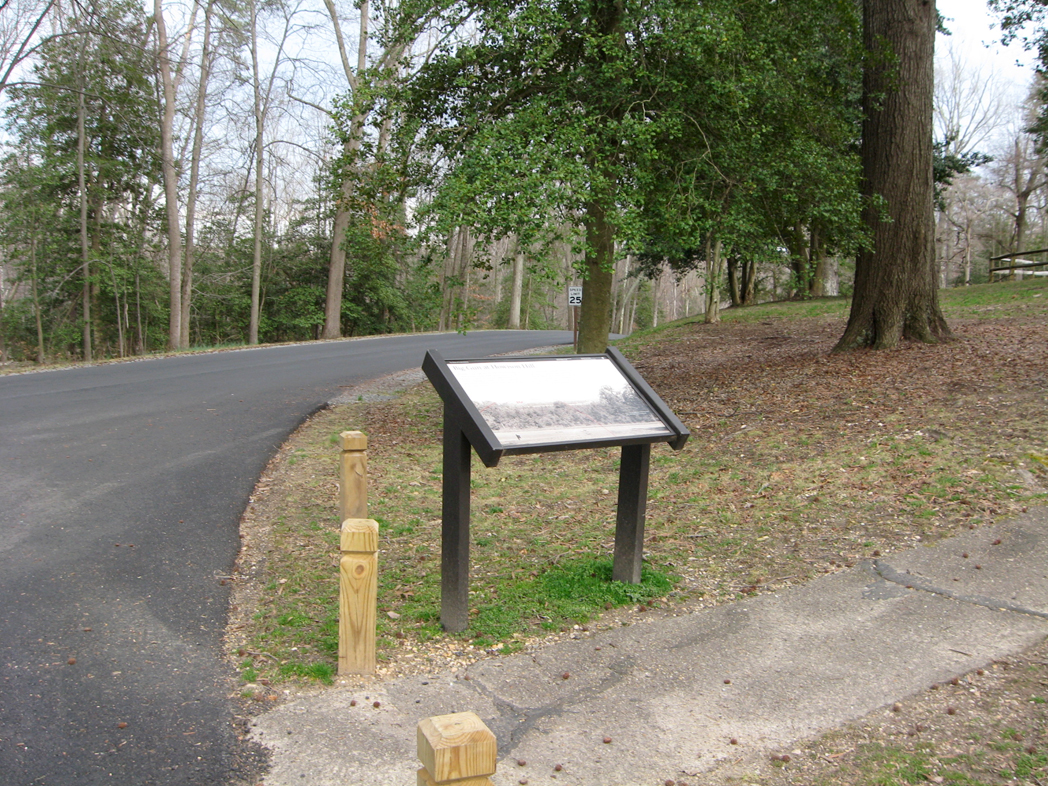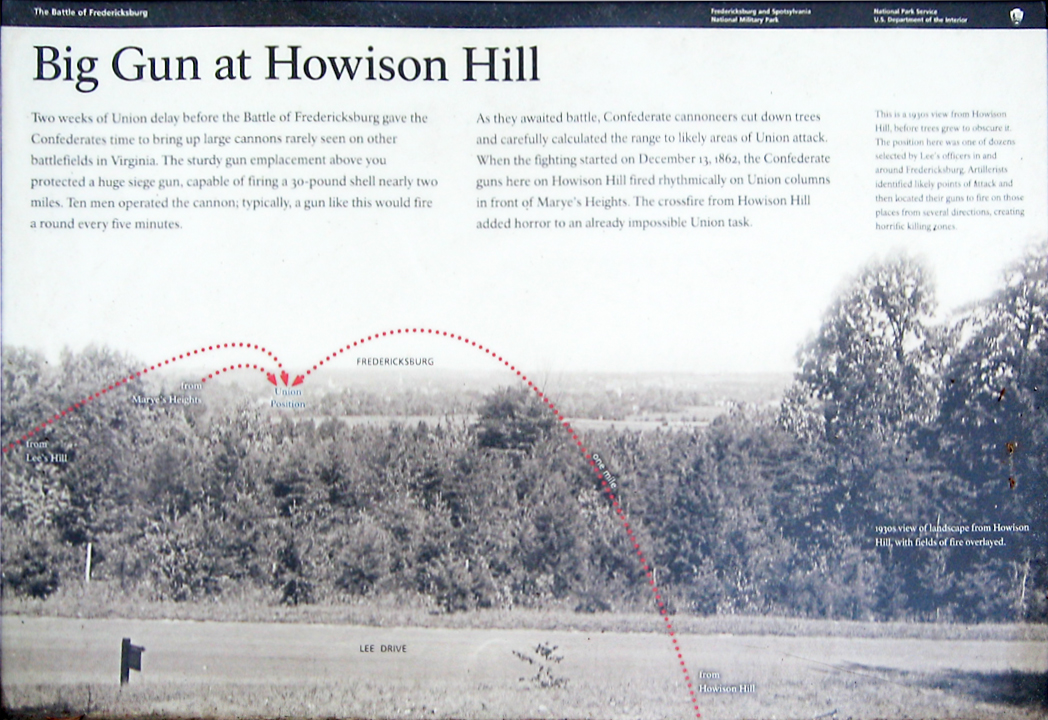Battle of Fredericksburg • Tour the Battlefield • Monuments & Markers • Armies
 Howison Hill is Stop Four on the Battle of Fredericksburg Auto Tour. (see map below)
Howison Hill is Stop Four on the Battle of Fredericksburg Auto Tour. (see map below)

There is one wayside marker at Stop Four, describing the large siege gun on display there:
Big Gun at Howison Hill wayside marker

Text from the marker:
Big Gun at Howison Hill
Two weeks of Union delay before the Battle of Fredericksburg gave the Confederates time to bring up large cannons rarely seen on other battlefields in Virginia. The sturdy gun emplacements above you protected a huge siege gun, capable of firing a 30-pound shell nearly two miles. Ten men operated the cannon; typically, a gun like this would fire a round every five minutes.
As they awaited battle, Confederate cannoneers cut down trees and carefully calculated the range to likely areas of Union attack. When the fighting started on December 13, 1862, the Confederate guns here on Howison Hill fired rhythmically on Union columns in front of Marye’s Heights. The crossfire from Howison Hill added horror to an already impossible Union task.
From the caption to the photo:
1930s view of landscapes from Howison Hill, with fields of fire overlaid

The photo below interesting comparisons between the two artillery pieces. The first, obviously, is size (12-pounder and 30-pounder refer to the weight of the projectile the guns fired).
The Napoleon on the right was one of the standard field artillery pieces of both armies. It was relatively light and maneuverable and had a good rate of fire with a good crew. It was a smoothbore, so its range was shorter than the rifled guns coming into use, but in the wooded battlefields of the Civil War this was not a major disadvantage. It was cast from bronze, so it was also relatively inexpensive and easy to manufacture.
The big siege gun is a Parrott Rifle, named for Captain Robert Parker Parrott, its developer. The main tube of the gun is cast iron, strong enough to take rifling grooves (which quickly wear down on a bronze gun). But cast iron is brittle and prone to bursting, so Parrott developed a process where a wrought iron band was fitted, red-hot, over the breech, then cooled with water poured down the barrel so that it tightly and evenly reinforced the gun at its most vulnerable point. This reinforcing band makes Parrotts easy to identify. Parrotts still burst (a Union 20-pounder did at Gettysburg and a 30-pounder burst on Lee’s Hill here at Fredericksburg) and although there was talk about replacing them they were still used by both sides throughout the war.
Parrotts came in many sizes, from 10- and 20-pounders used in the field to monster naval and siege guns that went up to a 300-pounder.

Compare the huge 30-pounder Parrott Rifle with the 12-pounder Napoleon (probably the most standard field gun of the Civil War) to its right.
Location of the Tour Stop
Stop Four is 0.5 mile south of Stop Three along the west side of Lee Drive. (38°16’43.8″N 77°28’25.5″W)
Directions to the next stop on the Auto Tour:
 To reach Stop Five continue south and east on Lee Drive 3.25 miles. Stop Five is on the left.
To reach Stop Five continue south and east on Lee Drive 3.25 miles. Stop Five is on the left.
